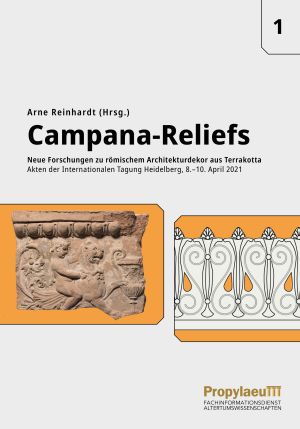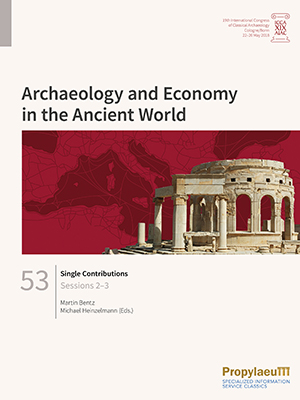Pensabene, Patrizio
Campana-Reliefs: Neue Forschungen zu römischem Architekturdekor aus Terrakotta: Akten der Internationalen Tagung in Heidelberg, 8.–10. April 2021
Architectural terracottas are typical of many Roman buildings from the Republic to the early Imperial period. Rich in imagery and colour, these terracottas adorned private and public buildings of the elite.
In spite of their broad use in Antiquity, modern research on this aspect of Roman architecture and cultural history is relatively scattered and often concentrates on the same aspects. For the first time, this volume gathers new international and interdisciplinary research on the topic, thus mapping out the current state of knowledge and at the same time introducing interesting perspectives for the future. Its sixteen contributions cover a broad range of topics, including the genesis and morphology of the genre, its imagery and polychromy, as well as the history of reception and collecting.
Sessions 2–3, Single Contributions
Economic aspects permeate all areas of public and private life in ancient societies, whether in urban development, religion, art, housing, or in death. Research on ancient economies has long played a significant role in ancient history. Increasingly in the last decades, awareness has grown in archaeology that the material culture of ancient societies offers excellent opportunities for studying the structure, performance, and dynamics of ancient economic systems and economic processes. Therefore, the main objective of this congress was to understand economy as a central element of classical societies and to analyse its interaction with ecological, political, social, religious, and cultural backgrounds. The theme of the congress was addressed to all disciplines that deal with Greco-Roman civilization and their neighbouring cultures from the Aegean Bronze Age to the end of Late Antiquity.
In this collective volume, single contributions of sessions 2 and 3 are dealing on the one hand with the investigation of natural environmental factors – climate and landscape – as impacts on the ancient economy, and on the other hand with the exploration of production system. Thematically, the spectrum ranges from the contextualisation of ancient handicrafts, to questions about the production of, for example, decorative metal objects, glass, portrait statues and bricks, to ancient architecture and the associated construction system. The temporal and topographical framework extends from Mycenaean and Archaic Greece, through Iron Age Southern Italy and Hellenistic-Roman Sicily as well as Macedonia, to Imperial Spain and Asia Minor.








